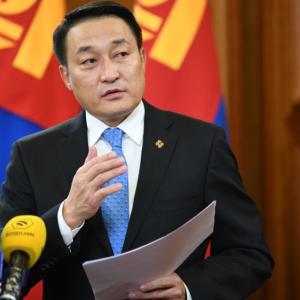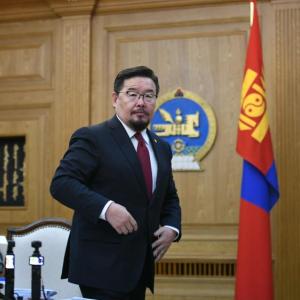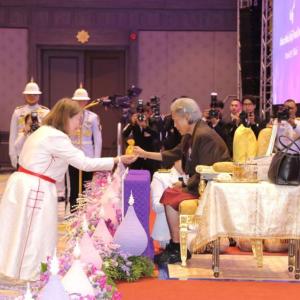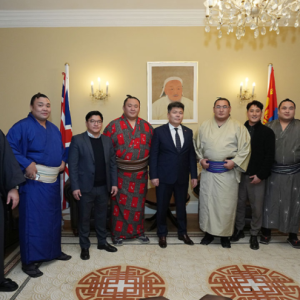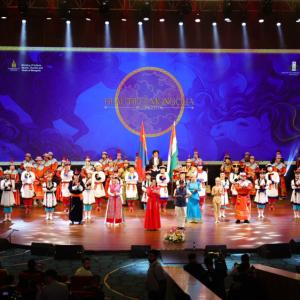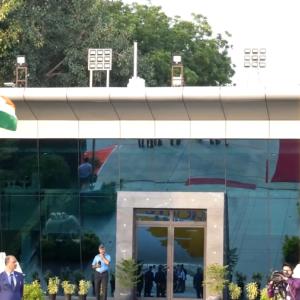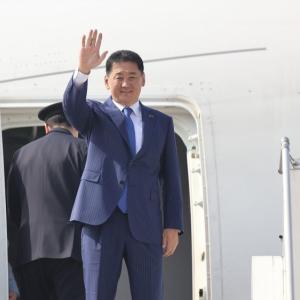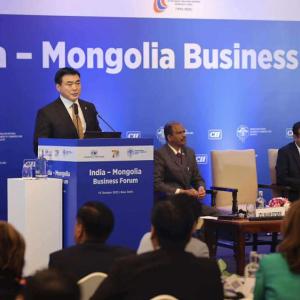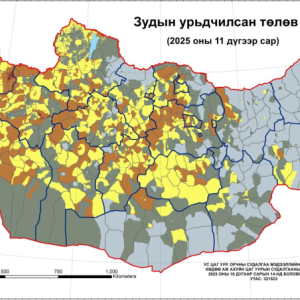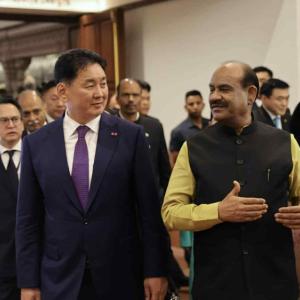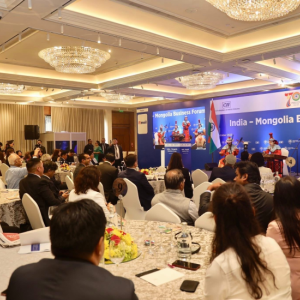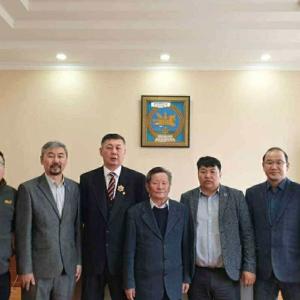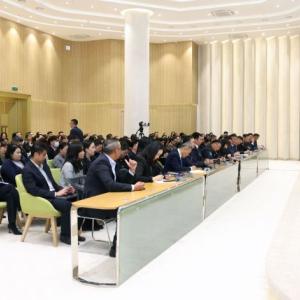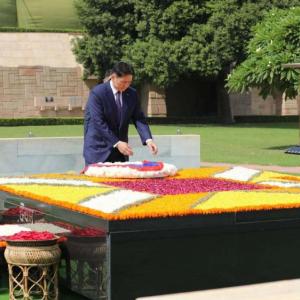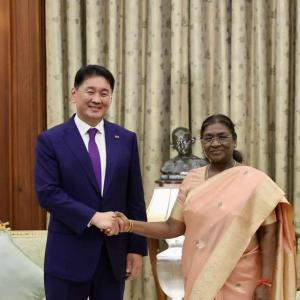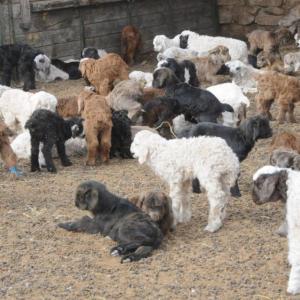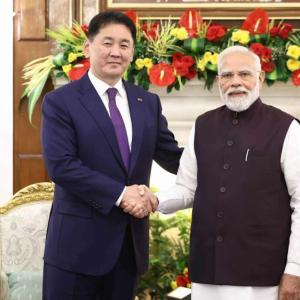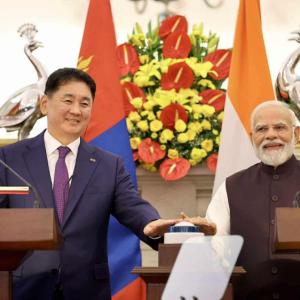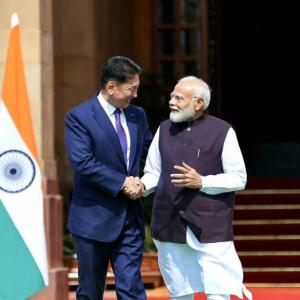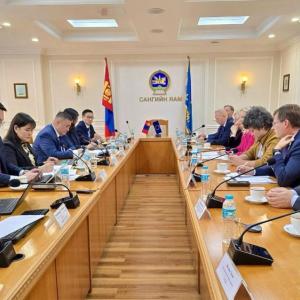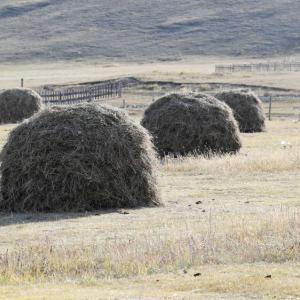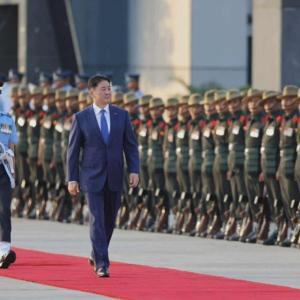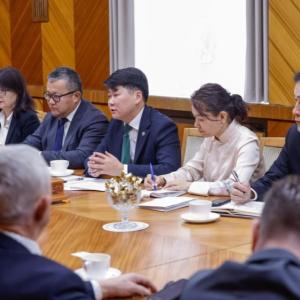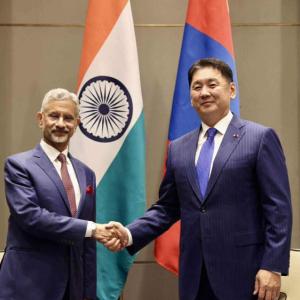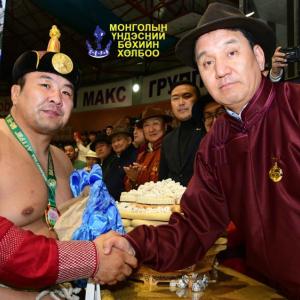The Unwanted War: A Challenge for Independence
Khalkh Gol-80
Ulaanbaatar /MONTSAME/. Sacrificing
the lives of your own people, bloodshed and fully using your
intellect--Independence is the result of a long, difficult struggle and the most valuable asset of a country
and its citizens. The last 100 years of Mongolian history evidenced how it was
gained with great efforts and how much sacrifice was needed for this valuable
asset. With independence as the end goal, great struggles define Mongolian
history during the 20th century. One of the chains of events that should be
considered comprehensively is the Khalkhin Gol Battle, which took place at the
most eastern part of the country 80 years ago.
A war or...
Was this historic event a war, a
battle or just a border conflict? Although it isn’t exact number, from the
statistics being provided by most researchers, the side of Japan and Manchukuo
came in with a force of 76,000 soldiers with over 300 planes, 182 tanks, 500
cannons and 304 machine guns. As for the side of Mongolia and the USSR, they
stood against them with 1.5 times more soldiers, with 1.6 times more planes, 4
times more tanks, 2 times more cannons and 1.7 times more machine guns, which
made the total number of soldiers from both sides nearing 200,000.
The battle mainly took place at
an area of about 20 km wide and 60-70 km long near the eastern border of
present Mongolia, which had not been then settled by the sides at the time. It
also took place near the Mana mountain of the Greater Khingan Range along the
basin of Numrug River (presently a part of the PRC).
The time when the Mongolian
border was trespassed several times by 100-130 km via air as well as when there
were constant border disputes for 4 years--it is not appropriate for this
historic event which involved the armies of 4 countries (Mongolia, the Soviet
Union, Japan and Manchukuo) to be considered just as border dispute, conflict
or as a mere battle. The aforementioned statistics is a clear proof that it
took place on the same level as a war. Furthermore, while border disputes,
conflict and battles do not result in one side being victorious, a large-scale
firearm conflict that resulted in a winner is considered as a war. During this
war, the people of Mongolia was able to repel invaders by collaborating with
the Soviet Union, and fortified its independence. It was a direct beginning of
World War II.
Cause of war and its
excuse
Countless conflicts were occuring
in every corner of the world. However, at the core of all the conflicts, it did
not matter whether in which continent and which country it happened as it was
mostly a realized form of misunderstandings and conflicts of interest between
empires. The same reason was the cause of the Khalkhin Gol Battle. During the time
in which the global states began to be hostile, confirming the outbreak of a
world war, powerful countries began to pay more attention to firearm and
weaponry. Increasing its influence in Asia, Japan invaded China from the
northeast in 1931, establishing Manchukuo in 1932. As a result, Mongolia came
to have a new neighboring country that was established with military power
alongside the Soviet Union and China.
Considering the situation at the
time, the cause for the war was the geopolitical rivalry of two states, more
specifically their regional policies to protect their area of influence and
further extend it. And its excuse was that it was due to the undefined border
between the Mongolian People’s Republic and Manchukuo that was established with
the support of Japan.
With the invasion into the
Northeast Asia, Japan began to border with the Soviet Union in a region of
about 4,000 km. The region had “natural” borders, such as Argun, Amur and
Ussuri rivers, the border was relatively easy to comprehend. As for Mongolia
and Manchukuo, there were no natural borders and due to the way of life of
Khalkha and Barga Mongols, the border wasn’t defined.
Although the Khalkha and Barga
herders had the previous border that was defined during the time of the Qing
dynasty, they frequently moved in-between the border due to natural disasters,
such as drought and dzud. The Barga people usually settled in the land of
Khalkhas, and in reality, the border region was jointly owned by the two sides.
Thus, the Government of Japan instructed the Kwantung army to effectively
define the Manchukuo - Mongolian border. According to a Japanese researcher,
the Japanese side did not understand the border principle of the nomads, which
resulted in the Khalkh River being the border between Mongolia and Manchukuo as
the border had to be defined by a natural border.
For this reason, the two sides had many cases of border disputes between 1934 and May 1939, constantly accusing one another. While the side of Japan and Manchukuo considered the stream of the Khalkh River as the border, the side of Mongolia considered the borderline to be the area to the east from the river to the Nomun khan and the Burd ovoo. As a result, whenever the Mongolian border troops crossed the Khalkh River to check up on the border, and the Japanese and Manchukuo soldiers were seen around the river, each side considered it as trespassing, causing conflict. To settle the dispute, negotiations and talks between Mongolia and Manchukuo began to take place from 1935 in order to not let the situation become worse. With a special governing policy, a prefecture named Khingan which mainly consisted of Barga Mongols was then established as a part of Manchukuo as the northern region was different from the other regions to the point that it was considered an autonomous region. As both Mongolia and Manchukuo were level-headed about the situation, they wished to settle the border dispute on their own through an agreement. However, during the heat of the talks, heads of the Mongolian and Manchukuo representatives (all of them were Mongolians) were constantly suspected as spies of the other side and Pan-Mongolists and executed. Thus, the Mongolians’ wish to peacefully settle the dispute and not let it turn into a war failed, and as there were regional disputes between the Soviet Union and Japan, the Khalkhin Gol Battle was immediately started, using the border dispute as an excuse.
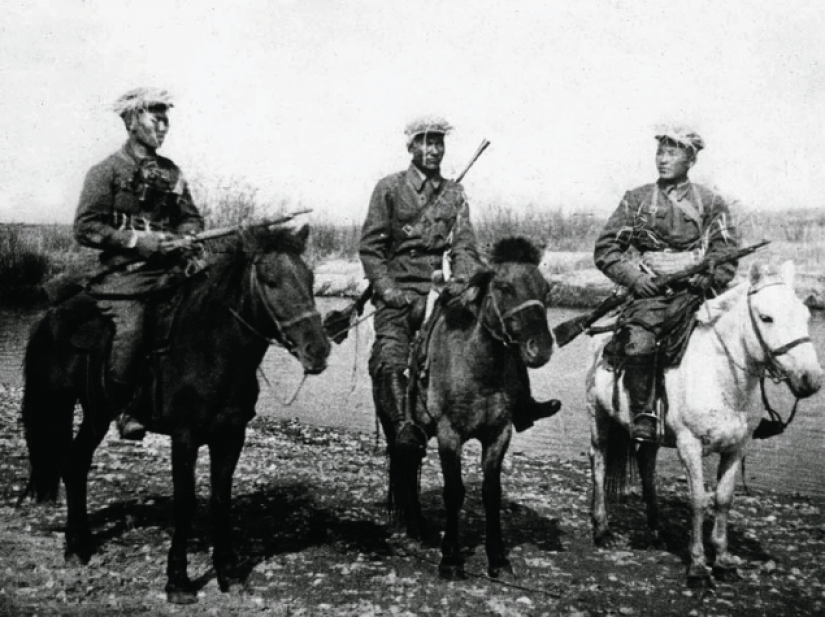
Phases of the Battle
The occasional border conflicts
that began in 1934 eventually escalated to become the Khalkhin Gol Battle that
took place from May 11 to September 16, 1939. Researchers consider the battle
in three phases in accordance with its chronological sequence.
Phase 1. With the army of
Manchukuo, the troops of the 23rd infantry brigade of the Japanese Emperor did
a deep invasion into the Mongolian territory. At the time of the invasion,
there was only one mounted platoon of the Mongolian army. Thus, as according to
the mutual assistance agreement, the soldiers of the Soviet Union that had been
placed in Mongolia were immediately moved near the Nomun Khan Burd ovoo, Buir
Lake and Khalkh River, stopping the advancement of the first attack of Japan
and Manchukuo. The soldiers of Mongolia and the Soviet Union then did a
counterattack, which pushed the Japanese and Manchukuo troops out of Mongolia
by May 29, marking the end of the first phase of the war.
Phase 2. Despite being equipped
with many times more weapons and soldiers than the first attack to eradicate
the Mongolian and Soviet troops and fortify their position at the west shore of
the Khalkh River, they were completely defeated at the Bayantsagaan mountain
range on July 2.
Phase 3. Increasing the amount of
troops, Japan and Manchukuo made another attempt to attack by early August.
Stopping their attack, the Mongolian and Soviet soldiers did a counterattack
with the support of airstrikes on August 20, sieging the Japanese and Manchukuo
army on August 23 and completely defeating them on August 28. They then pushed
back their army out of the area to the east from the river to the Nomun Khan
and the Burd ovoo by August 31.
Having faced with defeat
back-to-back, the Japanese and Manchukuo army then seized the east shore of the
river near the Mana Mountain (located close to the Khalkh and Numrug rivers) on
September 12, which is about 20 km from the Manjuur - Khailaar railroad
intersection. A few days later on September 15, an agreement was signed between
Japan and the Soviet Union in Moscow. This halted all war operations at 2 pm on
September 16, causing the side of Mongolia and the Soviet Union become unable
to make a counterattack to reclaim the Mana Mountain region. It was truly a
tragedy for Mongolia to lose the east shore of Numrug River and the Mana
Mountain region to the side of Japan and Manchukuo, which became a part of the
territory of China later on.
Some thoughts on the Khalkhin Gol Battle
Up to this day, researchers of
Mongolia and Russia believe that the cause of the Khalkhin Gol Battle has been
a part of the large-scale war plan (the Tanaka Memorandum) to seize the area
between Asia and eastern region of the Soviet Union and Siberia, which was
presented to the Japanese Emperor by Prime Minister Tanaka Giichi in 1927.
As for several other researchers,
they say that the memorandum never existed, and that the Kwantung army started
the Khalkhin Gol Battle on their own, without awaiting any instructions from
Tokyo. Thus, it was a foolish operation done by certain individuals rather than
a part of the Japanese policy.
During the war operations
conducted by the Japanese army in the Asia-Pacific region in 1931-1945, they
received the largest loss in a relatively short time at Khalkh River.
According to the agreement that
halted the war operations, the Japanese side sent 10 teams consisting of 1,000
military personnel into the territory of Mongolia to transport the corpses of
their soldiers, which was not possible to be done in 10 days. From the most
recent statistics, the number of casualties on the side of Japan and Manchukuo
were 22,699, while the casualties on the side of the Soviet Union were 25,655,
of which 9,703 were killed. As for the Mongolian army, the casualties were 990.
Although the numbers seem very
little compared to the loss of the Soviet Union and Japan, it does not make a
good reason to belittle the participation of Mongolia in the battle. Numerous
research works state that the Mongolian army was fighting against Barga and
Inner Mongolian soldiers of Manchukuo, whom were under strict supervision as
they did not wish to fight against soldiers who were of the same roots. But as
it was a battle, the sounds of gunfire must be heard. It is often mentioned in
the interviews of the Mongols separated by the border that Barga and Inner
Mongolian soldiers on the side of Manchukuo fired shots into the air to make it
seem believable for Japanese officers that they were fighting. This could be a
reason for the little amount of casualties for the Mongolian army.
Furthermore, the Japanese side
suffered more losses due to entire battalions and platoons of Barga soldiers
surrendering to Mongolian soldiers. But when faced with Soviet soldiers, they
would fight immediately. This was due to how they despised viewed the
horrendous repression, confiscation of wealth and religious intolerance as
step-by-step measures being taken against Mongolians, causing them to fight
with full force. Thus, it could also be possible that the position of the
Mongolian army was decided by taking it into consideration. There is also a
note written by a Japanese soldier who still could not come to terms with going
back home in one piece after spending several excruciating days in the Khalkhin
Gol Battle that said, “Soviets tried to save their military personnel and
equipment that were being used in the battle. Now that I look at it, they
placed Mongolian soldiers at the battlefront, which is the most dangerous area.
Are the lives of Slavs more important than lives of Asians?”
Japanese researcher Tanaka
Katsuhiko noted that the side of Soviet Union seemed to have called up a large
amount of Mongolic people, such as the Kalmyks and Buryats, and said,
“...Sending people of a sole root into war could have been due to them taking
Khulunbuir and Khingan of Manchukuo into consideration rather than their
cooperation with Mongolian soldiers…” Nevertheless, it is apparent that
Mongolians were separated into the Mongolian army, Soviet army and the Japanese
and Manchukuo army, having to fight for different reasons due to the battle
caused by the conflict of interest between the Soviet Union and Japan.
Conclusion
Unfortunately, the Mana Mountain
which is presently part of the Chinese territory was unarguably part of
Mongolian territory, and was not included in the area of the Mongolia-Manchukuo
border disputes. Even the main events of the Khalkhin Gol Battle had no
relation to this territory. However, the Japanese conquered this area which was
outside the territories of the battle just before they signed a peace treaty
with the Soviets at Moscow, ending the long-lasting war. Therefore, for
Mongolia this event meant their territory was cut off from them without any
dependent reason or relation to them.
Although the war was mainly carried out by the Soviet and
Japanese army, the Khalkhin Gol Battle was a severe threat to the existence of
the newly founded Mongolian People’s Republic. However, through the battle, the
Mongolian People’s Republic proved and validated its newly acquired
independence. Some short-sighted people say that our country should have
supported the Japanese in the war. For those with such beliefs I wish to ask:
“Have you ever imagined how the fate of our country would have been decided
after the Japanese lost the war?”
During the previous era of our society, countless stories and books about the Khalkhin Gol Battle have been published in Mongolia, igniting a powerful patriotic spirit in our citizens. As the times have changed, it is great that our citizens learned to have an approach on problems open-mindedly without being tied to any unreasonable “shackles”. However, the over-promotion of major historical events led to a significantly threatening carefree attitude. Such attitude has resulted in a tone which is undermining the integrity of our country and its history, and furthermore, in some cases, disrespecting our historical narrative of our independence. The Khalkhin Gol Battle was another challenge for acquiring independence to the tenacious Mongolians. The land we have lost and the lives of the brave soldiers that held weapons and fought amongst themselves from the opposing battlefronts of two superpowers were the heavy price paid in exchange for our independence as a nation. Our independence is the invaluable treasure we have built upon the split of our Mongolian race, the unfortunate deaths of many youths, bloodshed, a loss of vast amount land that no regret would fill, and an immeasurable amount of price and cost we have spent.
D.Bazardorj
Researcher at the
Institute of International Affairs
 Ulaanbaatar
Ulaanbaatar






